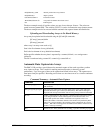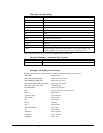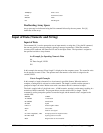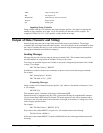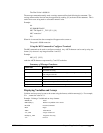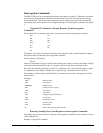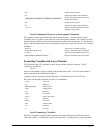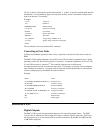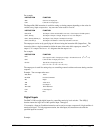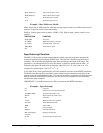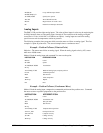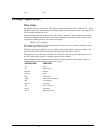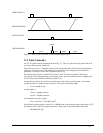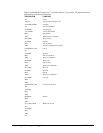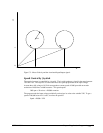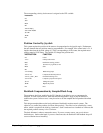
USER MANUAL Chapter 7 Application Programming • 139
For example:
INSTRUCTION FUNCTION
SB6 Sets bit 6 of output port
CB4 Clears bit 4 of output port
The Output Bit (OB) instruction is useful for setting or clearing outputs depending on the value of a
variable, array, input or expression. Any non-zero value results in a set bit.
INSTRUCTION FUNCTION
OB1, POS Set Output 1 if the variable POS is non-zero. Clear Output 1 if POS equals 0.
OB 2, @IN [1] Set Output 2 if Input 1 is high. If Input 1 is low, clear Output 2.
OB 3, @IN [1]&@IN [2] Set Output 3 only if Input 1 and Input 2 are high.
OB 4, COUNT [1] Set Output 4 if element 1 in the array COUNT is non-zero.
The output port can be set by specifying an 8-bit word using the instruction OP (Output Port). This
instruction allows a single command to define the state of the entire 8-bit output port, where 2
0
is
output 1, 2
1
is output 2 and so on. A 1 designates that the output is on.
For example:
INSTRUCTION FUNCTION
OP6
Sets outputs 2 and 3 of output port to high. All other bits are 0. (2
1
+ 2
2
= 6)
OP0 Clears all bits of output port to zero
OP 255 Sets all bits of output port to one.
(2
2
+ 2
1
+ 2
2
+ 2
3
+ 2
4
+ 2
5
+ 2
6
+ 2
7
)
The output port is useful for setting relays or controlling external switches and events during a motion
sequence.
Example - Turn on output after move
#OUTPUT Label
PR 2000 Position Command
BG Begin
AM After move
SB1 Set Output 1
WT 1000 Wait 1000 msec
CB1 Clear Output 1
EN End
Digital Inputs
The DMC-13X8 has eight digital inputs for controlling motion by local switches. The @IN[n]
function returns the logic level of the specified input 1 through 8.
For example, a Jump on Condition instruction can be used to execute a sequence if a high condition is
noted on an input 3. To halt program execution, the After Input (AI) instruction waits until the
specified input has occurred.
Example:



